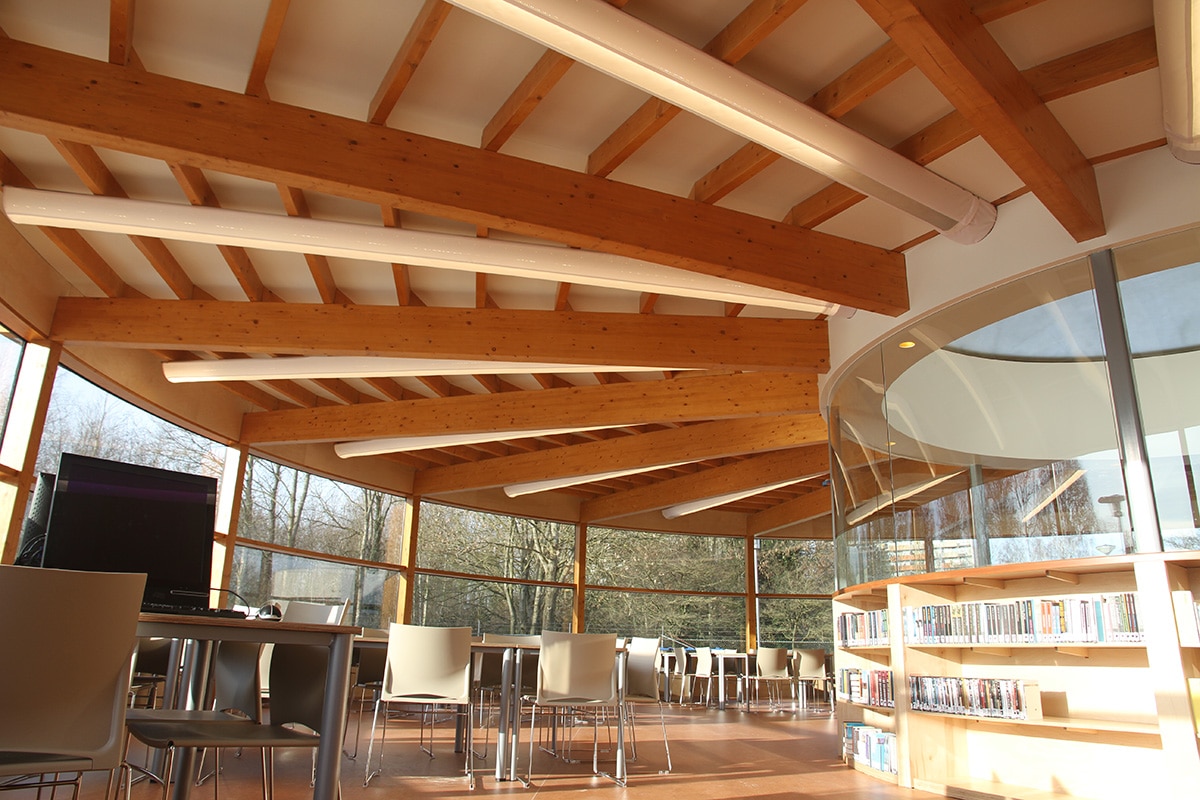How Proper Ventilation Can Contribute Towards Net-Zero Energy Buildings


As the global focus intensifies on sustainability and carbon reduction, more businesses and institutions are setting their sights on net-zero energy buildings. These are structures that produce as much renewable energy as they consume over the course of a year. Achieving this balance requires a multi-layered approach, and one often-overlooked factor is the role of ventilation. Specifically, proper ventilation can significantly influence energy performance, air quality, and overall building efficiency.
Why Ventilation Matters in Net-Zero Design
In any commercial or industrial building, ventilation plays a key role in maintaining indoor air quality and thermal comfort. However, traditional ventilation systems can be energy-intensive, relying on large volumes of air movement and mechanical cooling or heating. Without efficient design, these systems may counteract other energy-saving efforts in the building.
To truly support a net-zero objective, ventilation must be rethought to be not just effective, but also energy-efficient. This includes improving airflow distribution, reducing pressure drops, and minimising unnecessary heat gain or loss within the system. Here is where innovations like fabric ducting come into play.
The Role of Fabric Ducting in Energy Efficiency
Fabric duct systems offer a lightweight and flexible alternative to traditional metal ductwork. Unlike rigid systems, fabric ducting allows for even air dispersion across the entire length of the duct, reducing the need for additional equipment to regulate temperature and airflow.
Because fabric duct systems are designed for precision air distribution, they reduce energy waste by targeting airflow exactly where it’s needed. This precision helps to avoid hotspots or areas of overcooling, improving comfort levels without increasing energy demands. In large or open-plan buildings, this targeted control becomes essential for avoiding inefficiencies that can drive up energy usage.
Moreover, the installation of fabric ducting is often simpler and quicker, which can reduce labour and material waste, another indirect benefit when looking at a building’s overall environmental footprint.
Integrating Ventilation into a Net-Zero Strategy
For ventilation to meaningfully contribute to net-zero goals, it must be integrated early in the design process. This includes considerations around duct placement, system sizing, and compatibility with renewable energy sources such as heat pumps or solar-powered HVAC systems.
Energy recovery ventilation (ERV) or heat recovery ventilation (HRV) systems, when paired with efficient air distribution methods like fabric duct, allow buildings to reclaim heat from outgoing stale air and apply it to incoming fresh air. This drastically reduces the load on heating systems, contributing to lower operational energy use.
Additionally, modern building management systems can be programmed to adjust ventilation rates based on occupancy and CO₂ levels. When used alongside fabric ducting, this automation ensures that energy is only used when necessary and delivered precisely where it’s needed.
Supporting Better Air Quality without Sacrificing Efficiency
A common challenge in balancing energy efficiency with indoor air quality is ensuring adequate ventilation without excessive energy use. Poor air quality can result in reduced productivity, discomfort, and even health issues, especially in schools, offices, and manufacturing environments.
With fabric duct, businesses can achieve high levels of indoor air quality while maintaining energy performance. The system’s ability to distribute air evenly and gently helps reduce drafts and airborne particles, creating a more comfortable and healthier indoor environment.
Some Prihoda fabric ducting options also use recycled materials, further supporting a building’s environmental credentials. Choosing sustainable materials not only reduces the carbon impact of the system itself but also demonstrates a commitment to green design at every level.
Proper ventilation is an essential component in the journey towards net-zero energy buildings. While energy-efficient lighting, insulation, and renewable energy sources often take the spotlight, the impact of intelligent airflow design should not be underestimated.
Fabric ducting presents a compelling solution for businesses looking to reduce energy consumption without compromising on comfort or air quality. By incorporating these systems into early planning and aligning them with broader energy goals, organisations can take a significant step forward in achieving truly sustainable building performance.
Looking for more information?
Our experts are on hand to answer any questions. Why not give us a call or drop us a message, We’ll work with you to find the right solution.
Contact us

